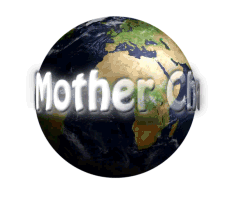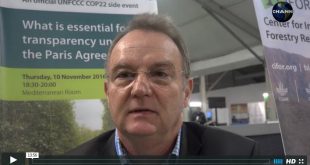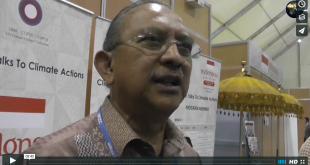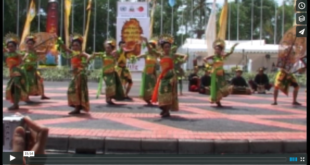UN Special Rapporteur on Rights of Indigenous Peoples, Ms Victoria Tauli-Corpuz, speaks on Land Rights and a Holistic Ecosystem approach to climate change adaptation, at COP 20 LIMA.
Indigenous peoples have a natural integrated approach to the environment and segregated land for single use is not something that resonates with them, as ancestral basic teachings held by the elders are to regard our territory in a very integrated holistic fashion, as this defines our cultures, identities and more importantly, our capacity to survive in this world.
It has been established through research by institutions like World Resources Institution (WRI) and Rights and Resources Initiative (RRI), that Indigenous territories have the lowest global levels of deforestation, an example of this are the indigenous forests in Brazil that have less than 1% deforestation compared to forests outside of the indigenous territories with a rate of around 7%. Mapping of indigenous territories normally indicate healthy forests which have certificates of ancestral domain titles – a law that recognises our collective rights to our lands and the government, and in terms of the landscape approach viability, it behooves us all to work together towards enabling this system for all.
In terms of the political arena, it is known that in many cases indigenous peoples rights to control, own and manage their lands, territories and resources have been significantly undermined since colonization and up to the present day. The ‘Human Rights’ base approach has been a subject of discussion for over 50 years, an issue we would want to put in the post 2015 Development agreement, as well as the Climate Change agreements that are being negotiated here, and logically, should be included with the ‘Landscapes’ approach. Continuous monitoring is important, because unless we reach a stage where serious government efforts are targeted towards respect, protection and fulfillment of the rights of indigenous peoples, there will really be a difficult path towards the landscape approach, which will result in multiple World Bank benefits for us.
What prerequisites would be required for monitoring in the field how the Landscape approach is being implemented – one solution would be the population of a National Land Use act that harmonizes all the different land users to be sustainable and ensure that rights are respected as well as equal systems or landscapes are sustainably used.
Links :
http://unsr.vtaulicorpuz.org/site/index.php/en/un-mandate
http://unsr.vtaulicorpuz.org/site/index.php/biography
http://www.wri.org/about (World Resources Institute)
http://rightsandresources.org/en/#.WDa_cJI5y_t (Rights and Resources Initiative)
 Mother Channel Environmental, climate change news and media.
Mother Channel Environmental, climate change news and media.



